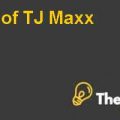Hospital Corporation of America (HCA) Case Study Help
On the other hand, the company could make considerable amount of investment in the construction of the new hospitals,which tends to generate the healthy profit returns for the future. The schedule of the growth strategy of the company shows that the company’ssecond most favorable activity would be the construction of new hospitals, which would potentiallyincrease the customers as well as the market share, leading to high brand image as well as an enhanced market reputation. The key performance indicators that could be widely used with the core consideration of assessing and evaluating the feasibility of the growth strategy must include improved profit returns and increased market share. Additionally, it is assumed that the company would generate 50 percent profit returns from the construction of newhospital. Furthermore, it is assumed that the company would generate 50 percent of the revenues of the year 1981 due to the fact that the management of the company is optimistic about its future profitability, based on the construction of new hospitals.
Identification of Most Important Goal for HCA
The strategic goal should be long term rather than the short term tactic that would only address the current issue and problem. The goal of the company should be to improve the business financial performance through increasing the profit return and enhancing the shareholder’s confidence. To achieve the goal and objectives for the year 1982; the management should build a culture of innovation and increase the teamwork. Additionally, the company should also foster the culture of communication and encourage the discussion and ideas. Byestablishing the shared vision; the company would be able to accomplish the target objective and reap the financial benefits.
In addition to this, the company should measure the feasibility of the project at every stage to assess the performance of the strategy. Along with this, the company should take a closer look over the moves of the market rivals and take every possible step to be able to beat the market competition. The acquisition and construction as a growth prospects requires a critical analysis of the market and competitive pressure along with the trends and opportunities. By doing so, the company could assure the success of the growth strategy and become able to increase the profit returns over time.
Total Capital at the end of the year 1982
The amount of total capital at the end of the year 1982 would be based on the shareholders’ equity and the long term debt. As previous calculations show that the proportion of debt and equity should be 82 percent and 18 percent respectively, to reach the goal of 25 percent growth, 15 percent dividend payout ratio and 11 percent return on total capital.Theproportion of the debt and equity should be $472321428.6 and $102678571.4,respectively.Hence, resulting in the total capital of $575000000.
Calculation of the Retained Earnings for the year 1982
The ending retained earnings for the year 1982 is calculated through calculating the net income, sales and profit margin for the year 1982. The growth rate of sales and net income of the company for the year 1982 are calculated on the basis of historical trend. The growth rates are used to calculate the sales, net income and profit margin for the following year. Despite of the fact that the company has witnessed negative profit margin; the profit margin for the year 1982 is supposed to be positive due to the growth strategy that would lead towards positive returns for the company.
The net income of the company for the year 1982 is added into the last year’s ending balance of retained balance, to calculate the ending retained earnings for the year 1982. The retained earnings for the year 1982 would be $637214.8.
New debt and Equity
Due to changes in the retained earnings; the shareholder’s equity of the company is changed from $767600 in 1981 to $1031211 in 1982. The debt to equity ratio is calculated by dividing the total liabilities of $2190556 by the new shareholder’s equity of $1031211, hence resulting in 2.12. The debt to equity ratio is converted into debt and equity percentages, which shows that the new debt and equity percentages would be 68 percent and 32 percent, respectively................................................
This is just a sample partical work. Please place the order on the website to get your own originally done case solution.











